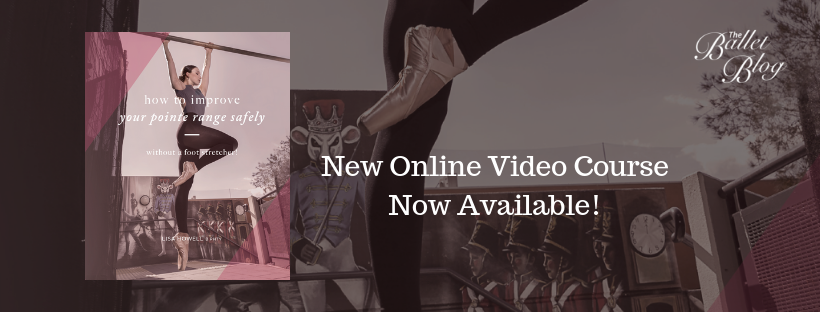- Free Articles
- Shop
- Workshops
- The Dance Educator Series
- L1 – The Fundamentals
- L2 – Pointe Intensive
- L2 – Flexibility Intensive
- L2 – Training Turnout in Tiny Dancers
- L3 – Foot & Ankle Injuries in Dancers – NEW
- L3 – Hip Injuries in Dancers
- L3 – How to Train Extreme Mobility Safely
- Upcoming Workshops
- Workshop FAQ’s
- Workshop Testimonials
- Host Application Form
- Dance Teacher & Health Professional Directory
- Members Areas
- Cart
- My Account
It is one of the most often asked questions in ballet, yet one to which there has not really been one definitive answer.
"How do I know when I (or one of my students) am ready for pointe work?" Young girls dream of their first pair of pointe shoes for years before they will be allowed to get into them, and, until now, it has basically been up to the teacher to decide when each student makes the transition.
This has lead to many girls being allowed up too early, to “keep up with their class”, often resulting in chronic foot injuries that may plague even the most competent dancer throughout their career, or even permanent damage. Due to the variability in growth rates of girls in the 11 – 14 year age group (when most girls start en pointe) and the lack of complete closure of many of the growth plates in the feet until at least 16 – 18 years of age, strength of the feet and ankles is a huge factor in preventing injury when progressing to toe shoes.
In conversation with ex-principal dancer of the Australian Ballet, Vicki Attard, I asked her how she manages to teach so many levels in one class. Her response is below.
Yet making that transition onto pointe is still difficult for a dance teacher to know. In Australia, many dance teachers have realised the importance of getting each girl individually assessed prior to going onto pointe. The 'best dancer' within a class may not necessarily have the strongest feet, and many weakness can be hidden inside regular ballet slippers. They advise each girl to undertake an assessment with a Special Dance Physical Therapist, who will perform screening tests that take much of the responsibility off the dance teacher in deciding who is able to go onto pointe and when. Following an initial assessment, special strengthening and mobility exercises are taught to strengthen any weaknesses in the dancers feet, ankles, hips and core muscles, to help the girls cope with the demands of pointe work.
A Dance Physical Therapist will see hundreds of girls each year for such assessments. The teachers find the resulting written reports on each girl extremely helpful for tailoring corrections in class, and all note the dramatic improvement in the girls overall approach to dance, both technically, and energetically, once they have their assessment, and have specific goals to work towards.
However, as there is a limited number of dancers a therapist can see day to day, and due to the enormous global interest in Ballet, a program was developed that made this process available to DANCE TEACHERS all over the world.
The Perfect Pointe System is a comprehensive program that helps Dance Teachers assess their students carefully to ensure that they are really ready to go en pointe. There are so many differences in young students structural make up and technical capacity as well their strength and flexibility, so no class will ever be ready to all go en pointe together.
The assessment looks at:
- Basic Ballet Technique,
- Foot and Ankle Strength
- Pointe Range
- Plie Range
- Anatomical Structure of the Foot
- Turnout range and Control
- Core Control
- Maturity and Physical Development
All of these areas are assessed with tests to assess each student's current strength and mobility, and are clearly demonstrated with clear photographs of both the correct and incorrect positions explanations of what any weaknesses may mean. This then leads on to suggestions of specific exercises to help improve all the highlighted areas. Once a student can correctly perform all of the tests she should be strong enough to commence pointe work under the guidance of a qualified teacher.





